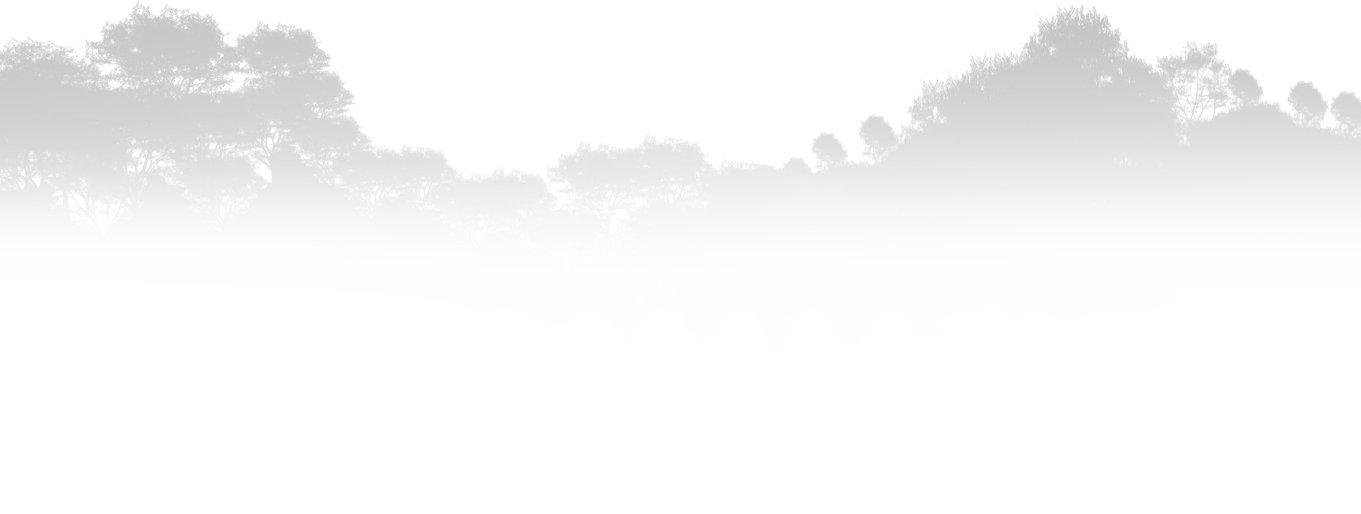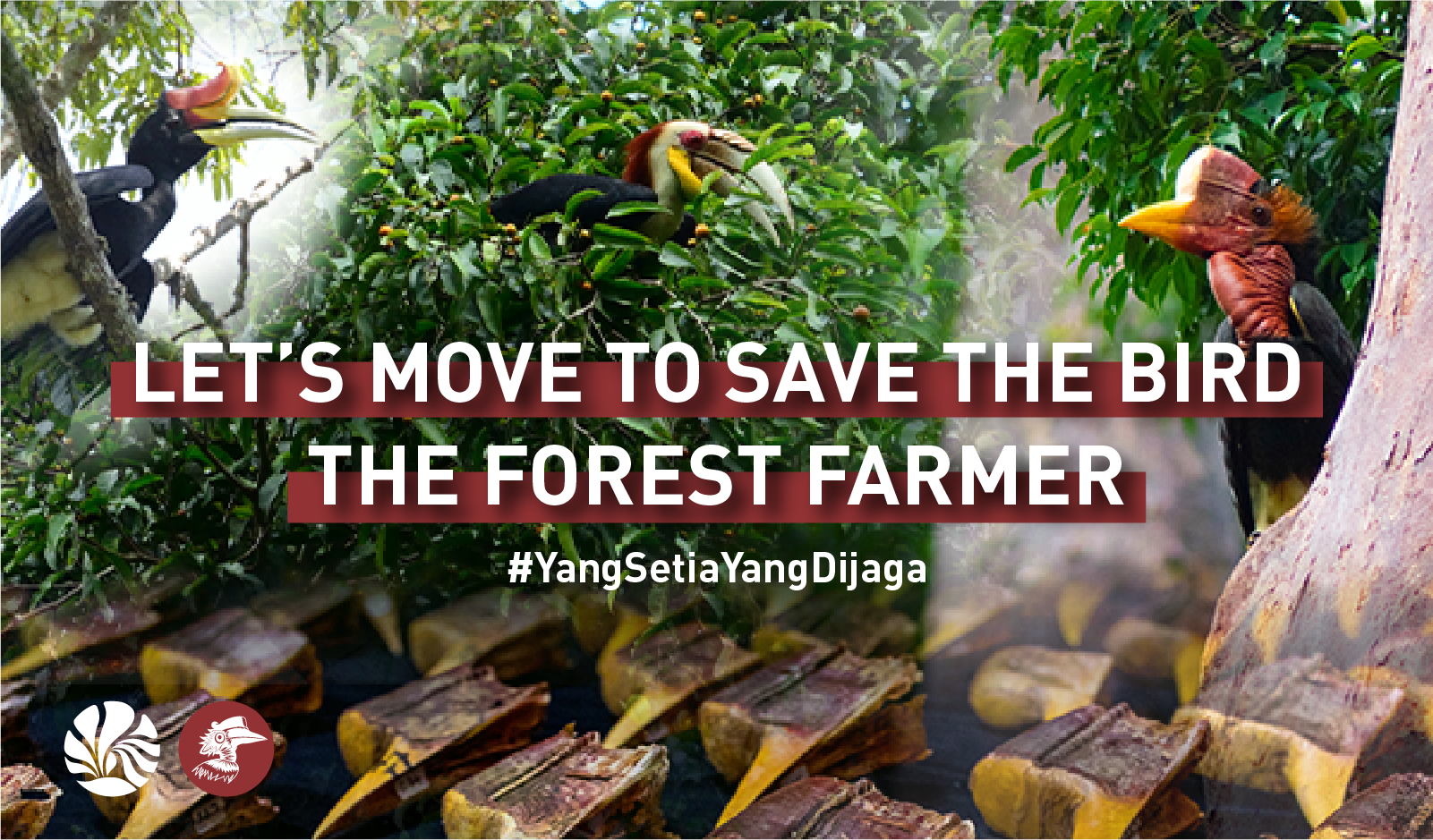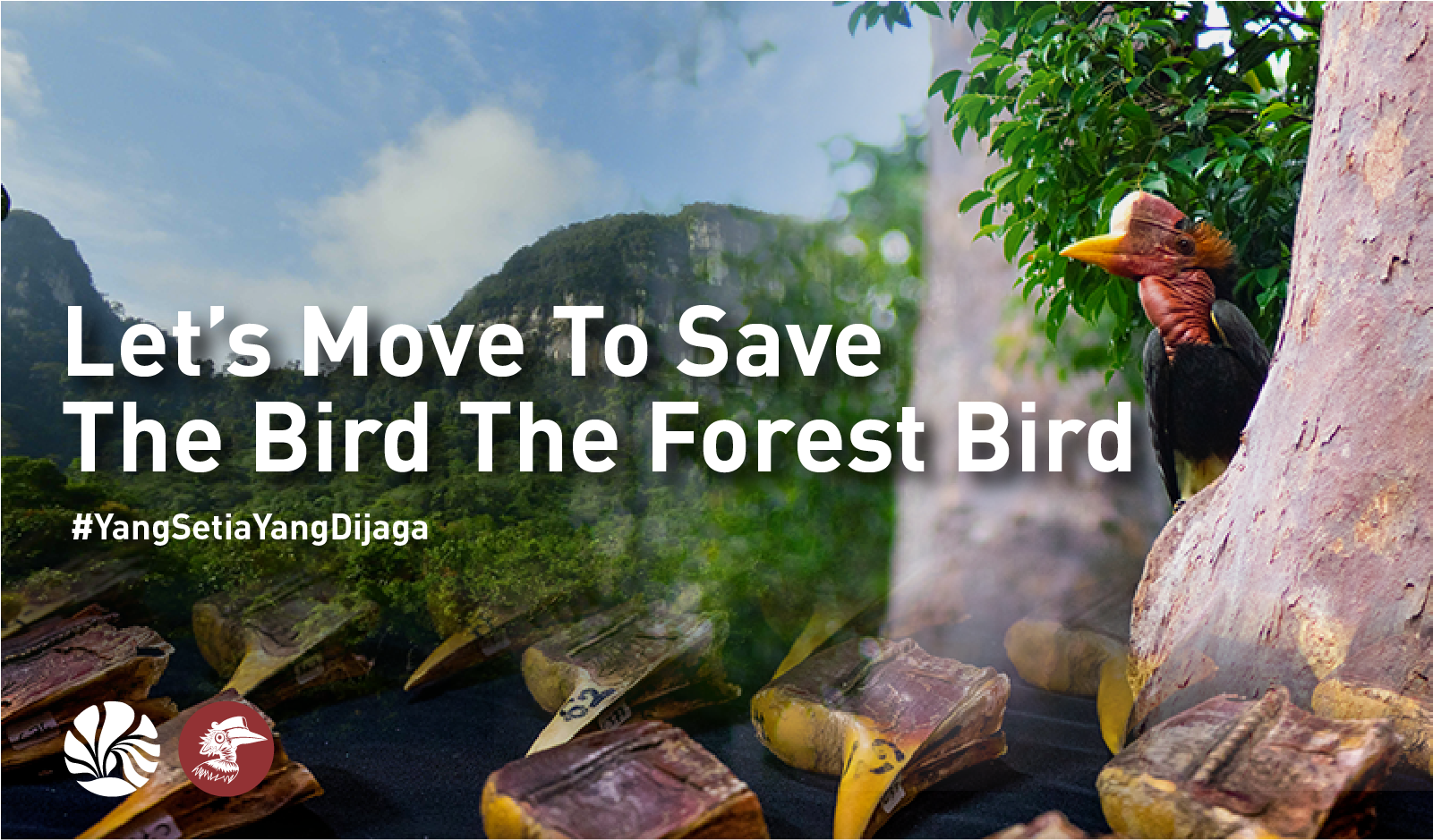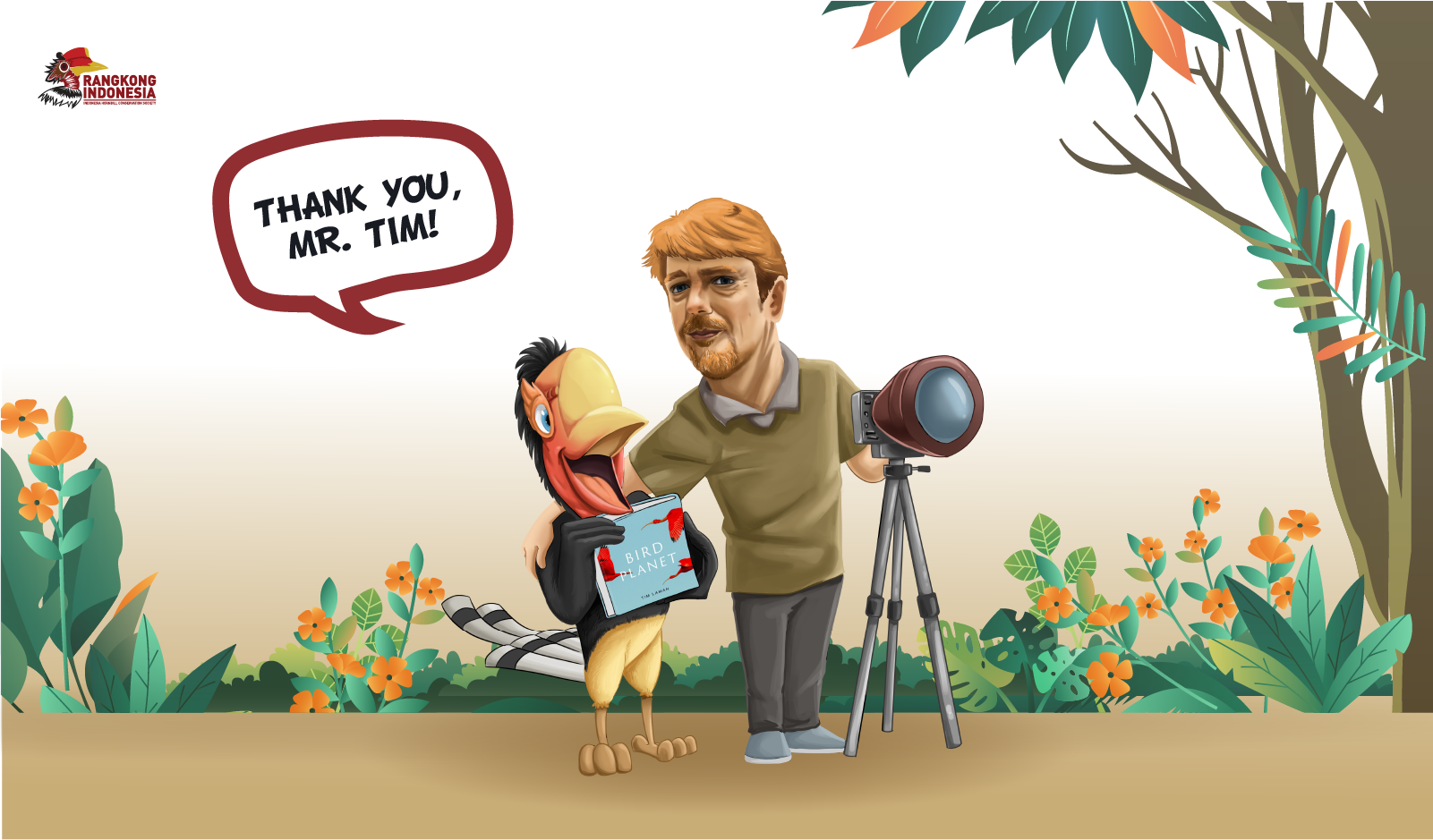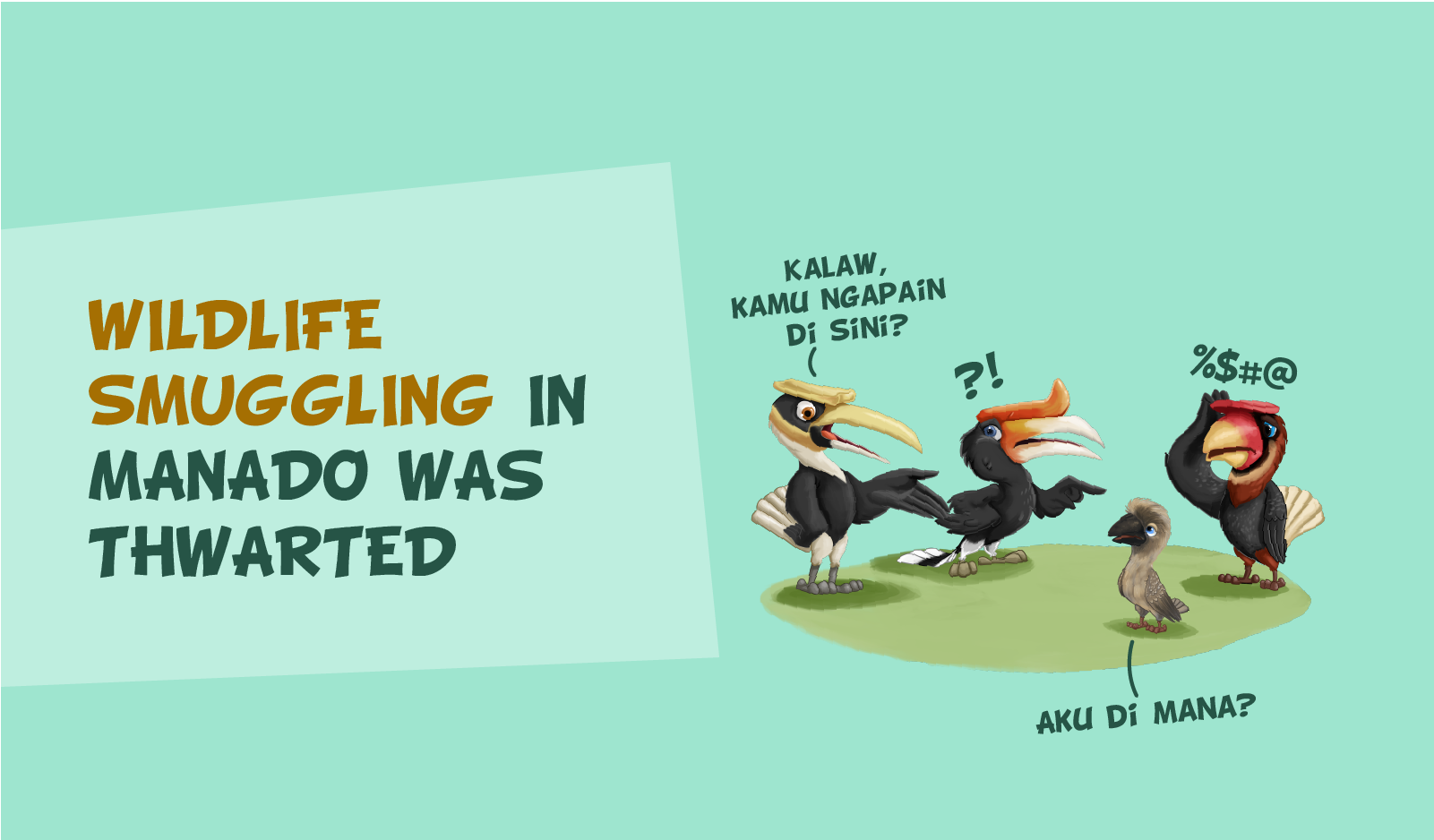#YangSetiaYangDijaga
A total of 13 species of hornbills lives in Indonesia. Its flying ability is up to 100,000 square km, roaming freely over the forest. The seeds of the fruit it eats scatter and grow into new trees, they are carbon warriors. Having just one partner for life is a testament to his loyalty. However, threats such as hunting and forest encroachment are always close to them.
- WHAT IS THE ADOPTION OF NESTING HORNBILL AND FIG TREES?
The adoption of Nesting Hornbill and Fig Trees is a program that aims to restore the population and maintain the sustainability of 13 species of hornbills in Indonesia.
The inaugural program started from 8 species of hornbills in Kalimantan, especially in Kapuas Hulu Regency, West Kalimantan. This program also involves local communities to help maintain and protect the hornbill directly.
Following the nesting hornbill adoption program does not mean we "keep the hornbill" but keep the nest tree that is being occupied by the female and the chick (juvenile) to be free from all forms of threats, also monitor their development until the chick are ready to leave the nest to explore the forest.
- HOW DOES THIS ADOPTION SCHEME WORK?
The Indonesian Rangkong team along with local residents of the hornbill keepers will conduct a search for nesting hornbills and feed trees in the forest.
Then, nest and fig trees found will be recorded for profiling needs and ready to be published to open adoption activities/packages.
Incoming adoption funds will be used for the process of activities in the program such as search, monitoring and maintenance by "Local Champions".
Then Rangkong Indonesia will provide monitoring results report and also documentation periodically to adopters.
- WHAT ADOPTION PLANS ARE AVAILABLE?
You can participate in trying to preserve 8 species of hornbills that live in the forest, Kapuas Hulu landscape. This adoption can be done individually or in groups with a maximum number of 4 people.
- Package I: Adoption of Nested Hornbills
There are 3 types of programs that you can choose, namely,
- Adoption of Helmeted Hornbill (Rhinoplax vigil)
Helmeted Hornbill adoption fee amounted to Rp. 6. 000.000
- Adoption of large-bodied Hornbills (Rhinoceros Hornbill (Buceros rhinoceros), White-Crowned Hornbill (Berenicornis comatus), Wreathed Hornbill (Rhyticeros undulatus), Wrinkled Hornbill (Rhabdotorrhinus corrugatus))
Small hornbill adoption fee of Rp. 2,000,000
- Adoption of small-bodied Hornbills (Black Hornbill (Anthracoceros malayanus), Oriental Pied Hornbill (Anthracoceros albirostris), Bushy-Crested Hornbill (Anorrhinus galeritus))
Small hornbill adoption fee of Rp. 2,000,000
- Package II: Adoption of Fig Trees
One of the things that is no less important is to keep the tree its main feed source. This package is one of the efforts in keeping the feed tree available.
- Fig tree adoption fee of Rp. 500,000
- Package III: Adoption of Nesting Hornbills and Fig Trees
This package is very appropriate to choose when you want to take care of the hornbill and its feed tree. Living 8 species of hornbills and fig trees are something that cannot be separated.
- The cost of adoption of helmeted hornbills and fig trees amounted to Rp. 6,500,000
- The cost of adopting large/small hornbills and fig trees amounted to Rp. 2,500,000
- WHAT DO I GET IF I FOLLOW THIS PROGRAM?
You will get an adoption certificate, a sign on the adoption tree, updates and documentation of the development of the nesting hornbill process.
- HOW ARE THESE ADOPTION FUNDS USED?
Your adoption support fund, we will distribute to the "Local Champion" who guards the hornbill or fig tree. They will monitor and care for nesting hornbills until the juvenile is ready to come out, also so that the fig tree remains available and away from the threat of forest encroachment.
- HOW TO BECOME AN ADOPTER?
You can participate in preserving hornbills and their hornbills through the adoption of nesting hornbills and fig trees.
How?
- Please visit the following link to sign up [click].
- Rangkong Indonesia will provide a reply via official e-mail regarding the next process.
- DO YOU HAVE ANY QUESTIONS ABOUT THIS ADOPTION PROGRAM?
Please contact:
Email : Info@rangkong.org
Social Media : RangkongID or Rangkong Indonesia
- GLOSSARY
#YangSetiaYangDijaga : A campaign of adoption programs to encourage more people to take part in maintaining the sustainability of the hornbill.
Profiling : Nest tree data collection, covering the height of the tree, diameter, height free of branches, the shape of the nest hole and the height of the hole from the ground.
Local Champion : Local communities that seek, monitor and guard nest trees and hornbill feed.
